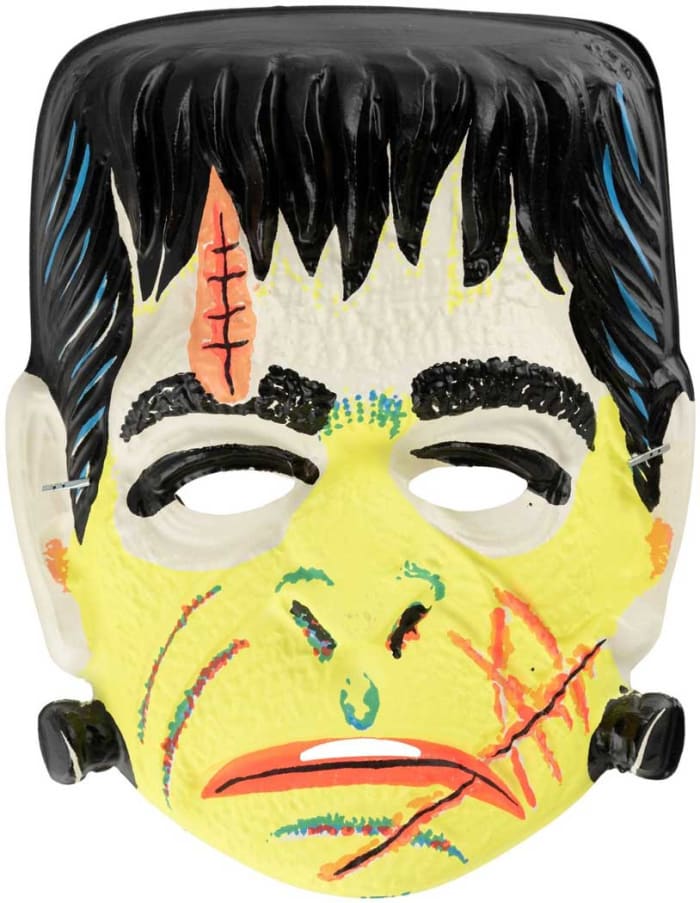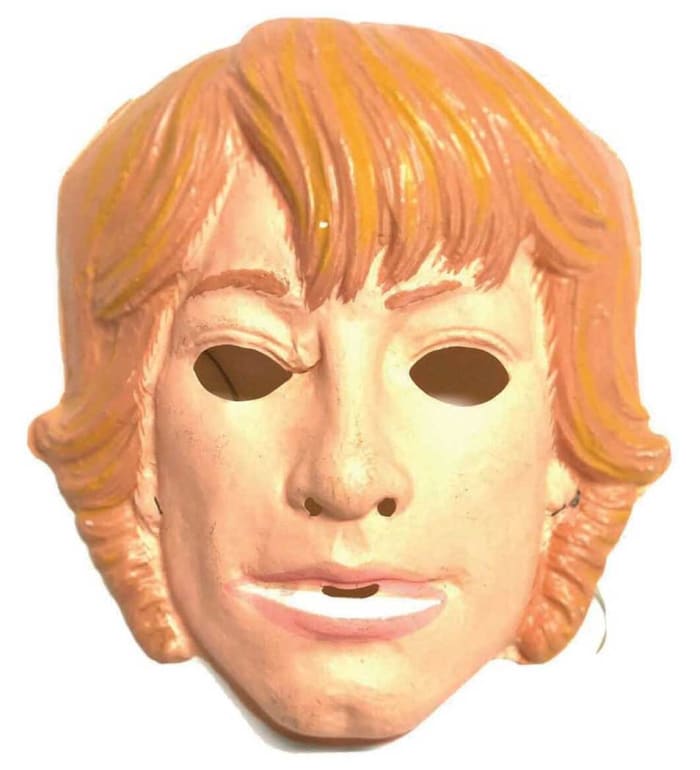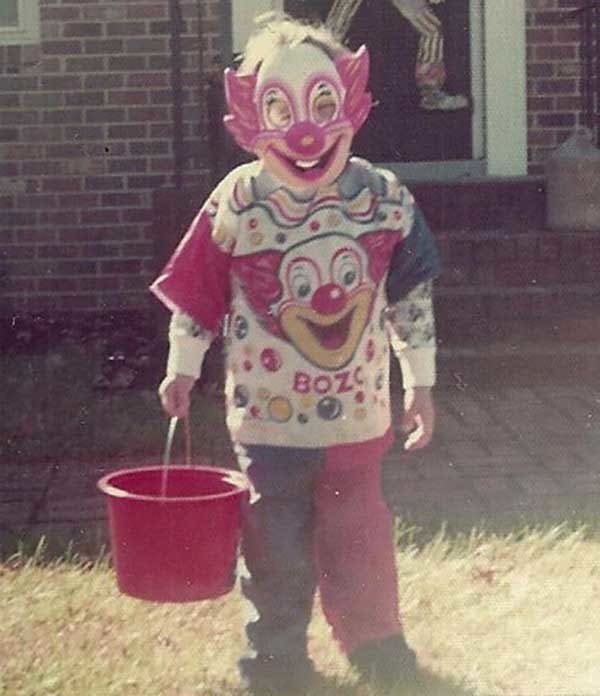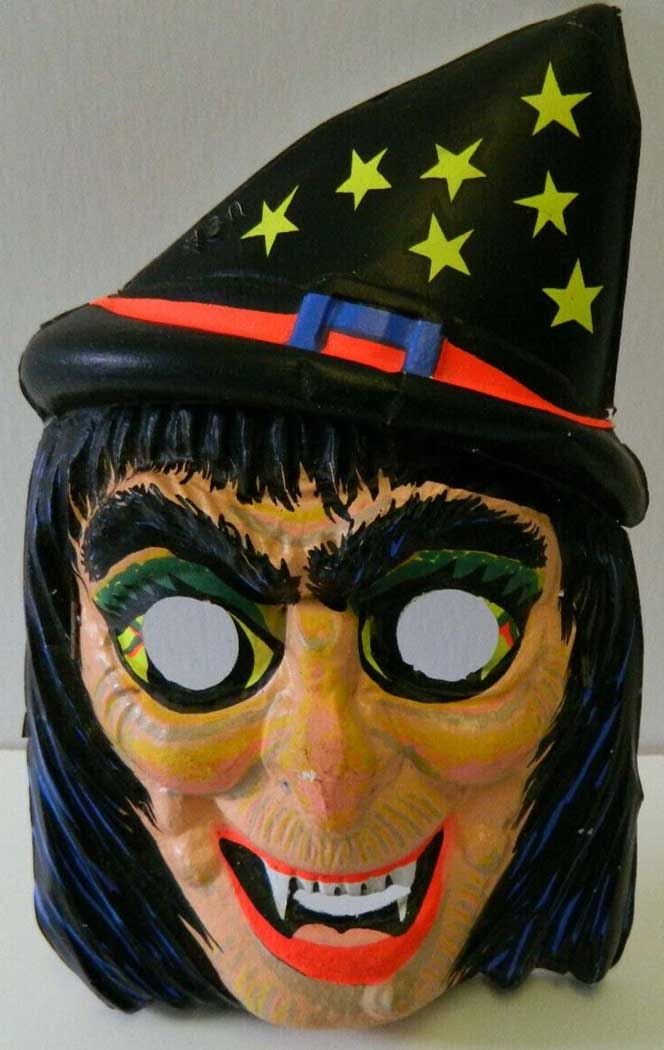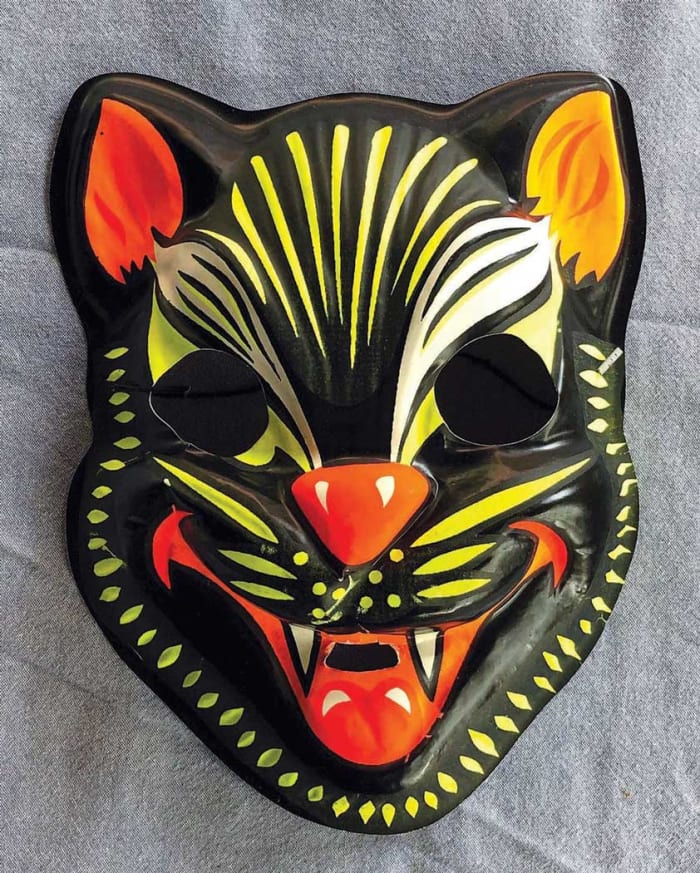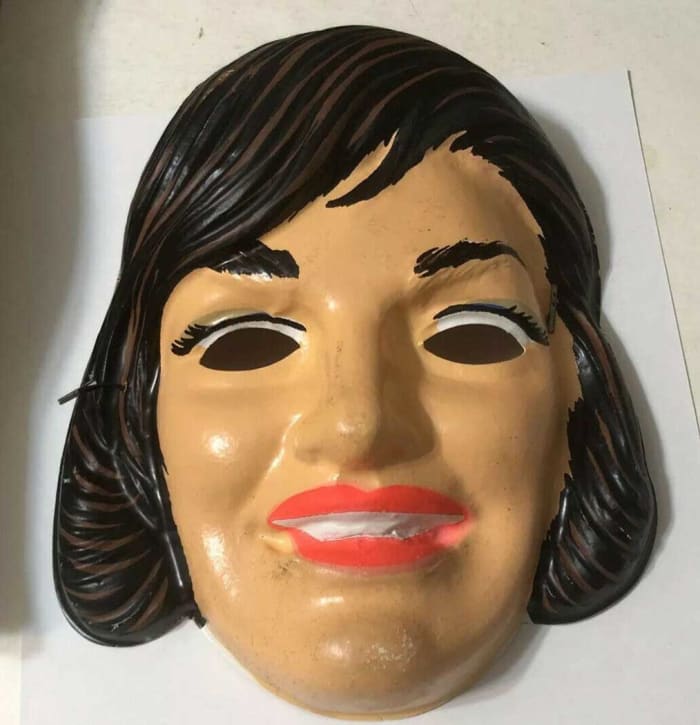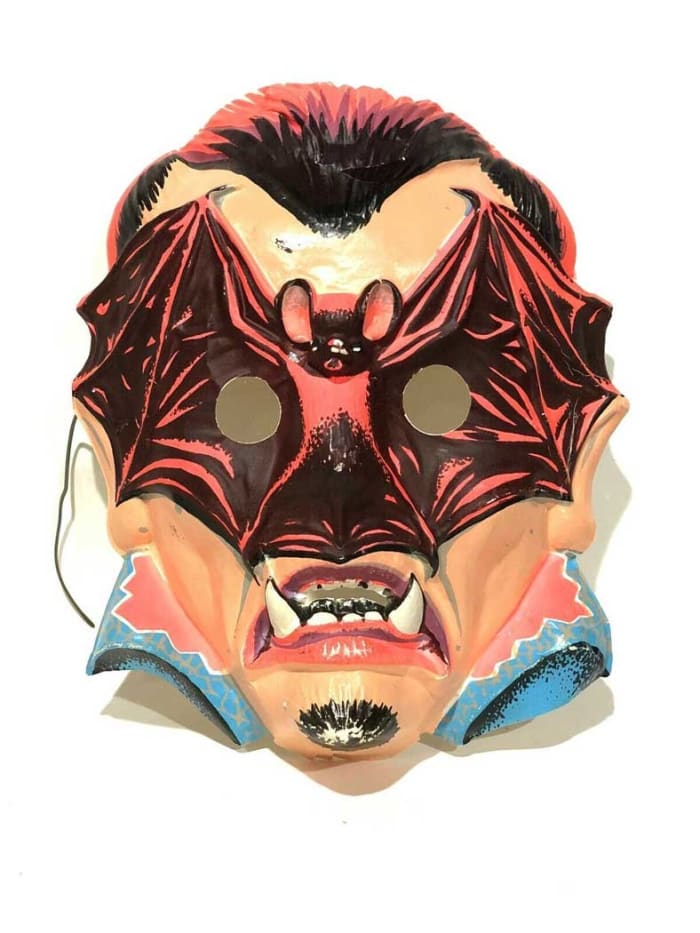If you were a child in the U.S. anywhere from around 1950 to 1990 and dreamed of being a princess, Superman, GI Joe, an astronaut, Barbie, a spooky monster or any character you watched on TV, you could make your dream come true each Halloween for less than $5. And for that amount, you’d get what you paid for: cheap vinyl smocks and plastic masks that fit awkwardly over your face and were held on by a single rubber band that was so thin, it could snap with just a thought.
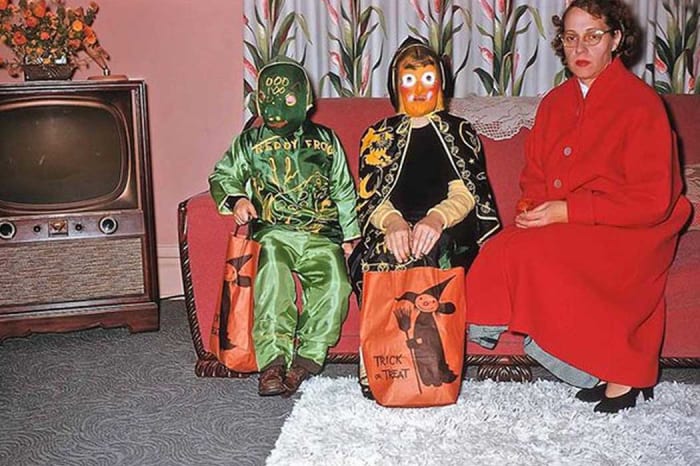
Halloween is fun, right Mom?!! Kids dressed as Freddy Frog and Witch with a fashionable mom and her mask of patience.
Those wonderfully kitschy Halloween costumes were uncomfortable, flimsy and barely had a resemblance to the characters they were portraying, but that didn’t matter. They made an indelible impression on all of us who wore them on those October days of childhood way back when, and the smell of the plastic and the way that the masks could make your forehead sweat still permeate many memories.
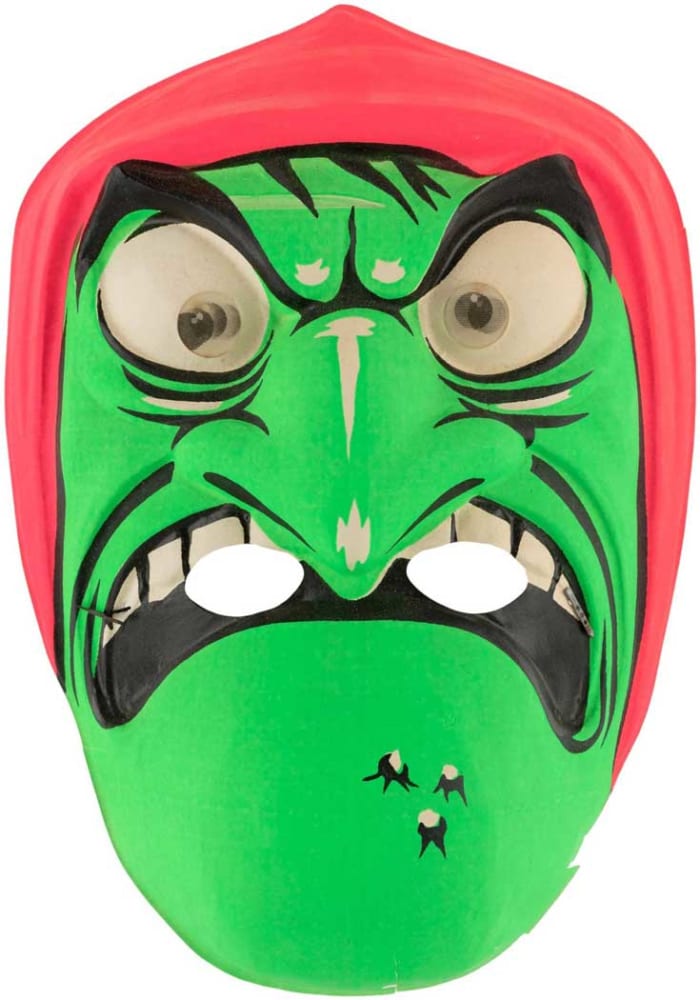
Fan-favorite Sea Hag character from Popeye, Collegeville, 1960s, with flicker-eye attachments, mask only; $118
Courtesy Hake’s Auctions
For decades, these costumes by Ben Cooper, Collegeville and, to a lesser extent, Halco, remained staples of the American trick-or-treating ritual.
Although Collegeville’s costume roots date to the early 1920s and Ben Cooper’s to the late 1930s, both started hitting their stride in the 1950s when television became mainstream and childhood and pop culture converged.
Kids could become their favorite cartoon, movie, and TV characters thanks to the licensing deals the companies had and their ability to predict what would be hot in the realm of pop culture fandom and fuel children’s imaginations. From Disney and Hanna-Barbera characters to Star Wars heroes and villains, to every superhero under the sun to pop-culture idols like Evel Knievel and The Fonz, to presidents to music icons like the Beatles to the classic Halloween creatures of vampires, witches, and ghosts, Ben Cooper’s and Collegeville’s rosters of characters were truly impressive.
By the ’60s, they were the top Halloween costume producers and their costumes in display boxes lined toy aisles, drug stores, JCPenney, Sears, Woolworths, local five-and-dime and novelty stores everywhere. These costumes remain a part of retro culture today as popular and nostalgic Halloween collectibles.
On eBay and Etsy, you can find pages of vintage Ben Cooper and Collegeville costumes. Once costing as low as $1.25, they are now selling anywhere from $5 to thousands of dollars, as was the case recently when a rare and complete 1966 Ben Cooper costume of Marvel comic-book character Daredevil sold on eBay for $2,000.
A costume of The Addams Family matriarch Morticia Adams sold at Hake’s Auctions for $1,752, and a costume of the hard-to-find Uncle Creepy sold on eBay for $689. Uncle Creepy was the host character for horror-comics magazine, Creepy, launched in 1964, and would introduce the stories in each issue.
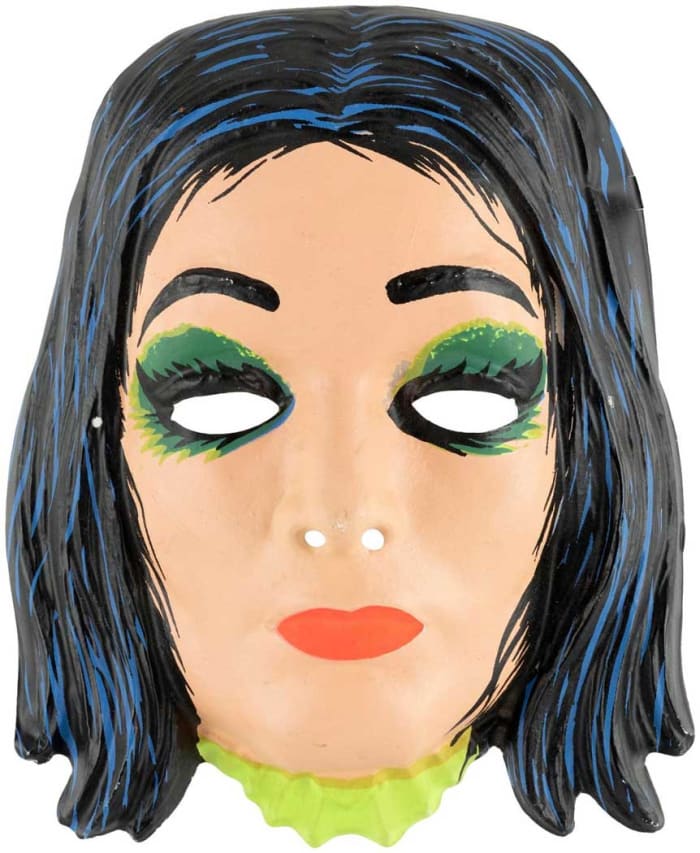
Morticia, Ben Cooper, 1965, with a Rayon outfit with “Morticia” on it, as well as large and smaller bat images and sparkle accents; $1,752.
Image courtesy Hake’s Auctions
Most costumes are selling in the range of $30 to $50. Vintage versions can also be found at estate sales, yard sales, thrift stores and flea markets.
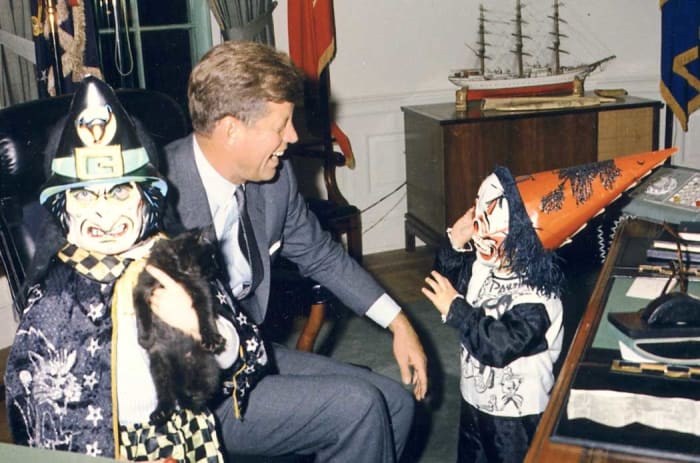
President John F. Kennedy laughs as his children, Caroline Kennedy (left, holding a cat) and John F. Kennedy, Jr., model their Halloween costumes in the Oval Office.
As with most any collectible, rarity and condition are the top factors of these vintage costumes. If they are still in the original box, the value can go up as much as 40 percent, especially if the box is still in good condition. While collectors prize boxed and complete costumes in good condition the most, a lot of people will buy just the mask and, in some cases, just the empty box. Most are bought for display purposes because a wall of old masks just looks really cool.
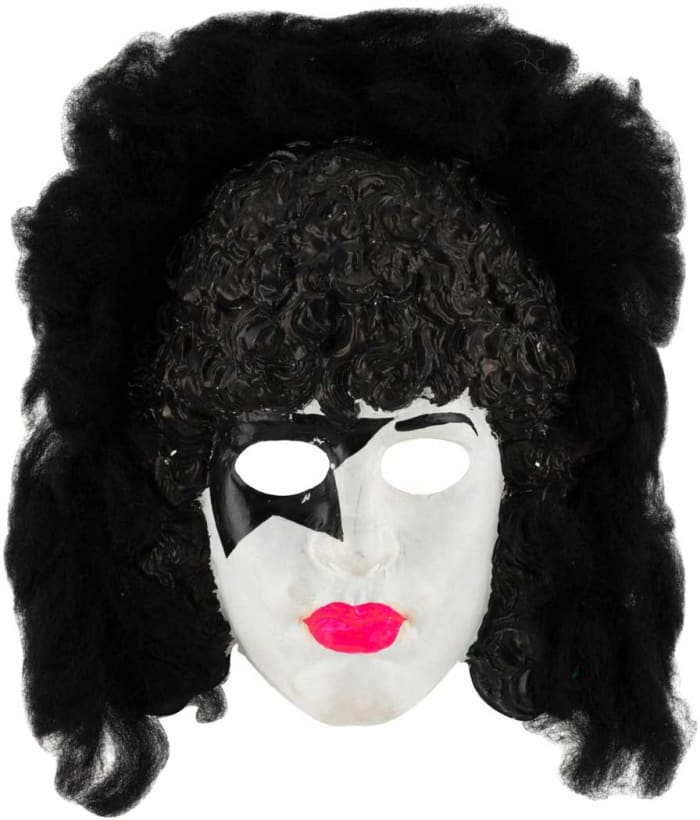
Unique prototype mask of Paul Stanley, founding member of KISS, from the Collegeville archive, 1979, mask only; $389.
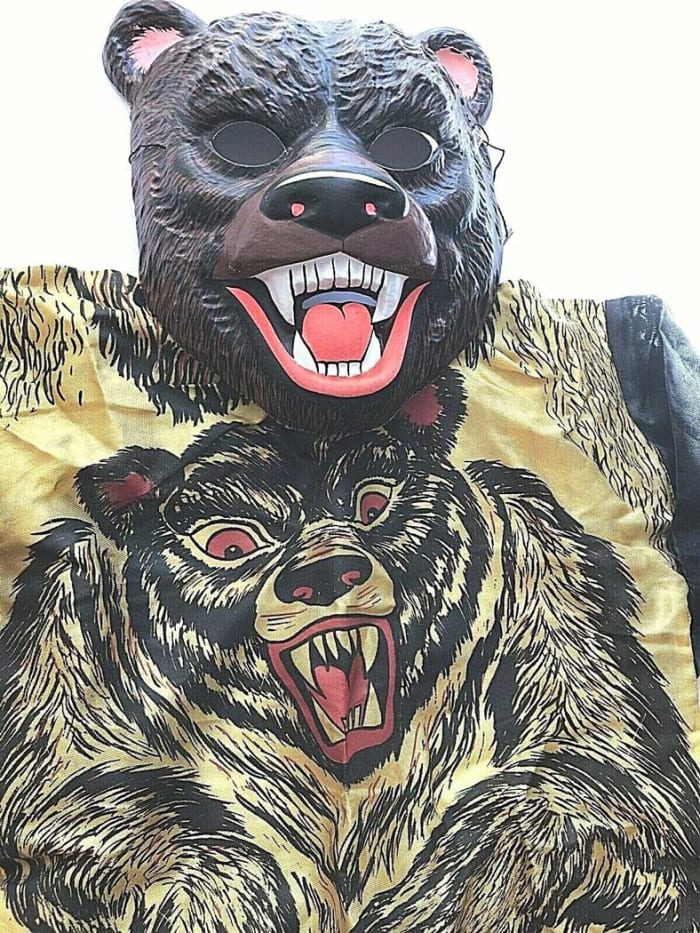
As with pretty much every costume, characters were printed on the outfit, too, in case there was any confusion. Spook Town Grizzly Bear, Ben Cooper, 1960s, no box; $16.64.


